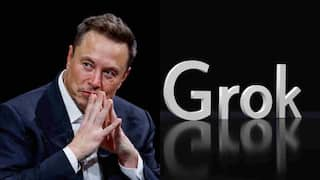Elon Musk Wants To Revamp Twitter Verification To Stop Spams. This Has Led To Even More Spams On The Platform
Elon Musk’s plans to ‘revamp’ Twitter verification has led to a flurry of spams and phishing emails asking users for personal credentials.

Elon Musk’s Twitter takeover has finally been completed after months of speculations and U-turns. The billionaire entrepreneur has now dissolved the microblogging platform’s board of directors, becoming the ‘sole director of Twitter’, which the CEO claimed is “just temporary”. While Musk looks to bring several changes to the platform, he said that Twitter’s verification process is being ‘revamped’. This led to media reports claiming that Twitter might start charging users $19.99 per month to keep their blue-tick badge. Read on to find what this might signal for current users.
What is Twitter Blue?
First introduced in June 2021, Twitter Blue is a subscription service that offers extra perks to users for $4.99 per month. It offers a handful of features such as bookmarking folders, undoing tweets (within 30 seconds), a reader mode, and more.
Will Twitter Blue be revamped?
On October 31, days after Musk announced that the takeover is complete, US-based investor and venture capital firm Andreesen Horowitz (a16z) partner Sriram Krishnan tweeted that he is “helping out” Musk with Twitter temporarily. To this, spaceflight photographer John Kraus asked, “Any chance in helping with verification?” as he got denied several times despite having a large number of followers (138,000).
To this, Musk tweeted that Twitter’s verification process is being “revamped”.
The whole verification process is being revamped right now
— Elon Musk (@elonmusk) October 30, 2022
Following this, several media reports — citing sources and internal company correspondence — said that a new Twitter Blue subscription is being planned by Twitter, priced at $19.99 per month.
ALSO READ: 'How Much Is It' To Blue-Tick 'Revamp': Timeline Of Elon Musk's Twitter Takeover In 20 Tweets
The revamped Twitter Blue will offer the earlier perks, but will also ask verified users to subscriber within 90 days, or lose their coveted blue ticks.
So far, Twitter’s verified badges were provided by the platform after users are able to verify their identity with copies of ID proof and additional checks. The platform didn’t charge users for the blue ticks.
Commenting on the rumoured verification revamp, Koo co-founder Mayank Bidawatka told ABP Live, “Koo had launched a self-verification process, granting a ’green tick’ to empower every user on Koo to be recognised as a genuine voice'. Additionally the "yellow tick" is given to eminent personalities so that users can find the right eminent personality. All this is done without any charge.”
Bidawatka added, “These verification processes are designed to ensure authentic users connect, including having access to eminent personalities, and engage in meaningful conversations.”
Why does Musk want to charge users for verification?
Musk has always been vocal against spam bots and inactive “popular” accounts on Twitter. On April 11, he shared a post that detailed stats that showed that the top 10 most followed accounts on Twitter don’t really post content as regularly as one may think. “Is Twitter dying?” Musk asked.
Most of these “top” accounts tweet rarely and post very little content.
— Elon Musk (@elonmusk) April 9, 2022
Is Twitter dying? https://t.co/lj9rRXfDHE
Later in the month, Musk tweeted that if his $44-billion takeover bid succeeds, he’d “defeat the spam bots or die trying”. Here, he also said that Twitter would “authenticate all real humans”.
And authenticate all real humans
— Elon Musk (@elonmusk) April 21, 2022
On May 13, Musk said that the Twitter deal is “temporarily” on hold “pending details supporting calculation that spam/fake accounts do indeed represent less than 5 percent of users”.
Musk claimed that at least 20 percent accounts on Twitter are fake or spam, and that the actual number could be “much higher”.
20% fake/spam accounts, while 4 times what Twitter claims, could be *much* higher.
— Elon Musk (@elonmusk) May 17, 2022
My offer was based on Twitter’s SEC filings being accurate.
Yesterday, Twitter’s CEO publicly refused to show proof of <5%.
This deal cannot move forward until he does.
So, it can be speculated that the Twitter Blue subscription-focussed revamp, if true, falls in line with Musk’s strict stance against spams or bots on Twitter.
Twitter users are now facing verification-based scams
Several Twitter users have taken to the platform to express their concern and disgust with the Musk’s plans to monetise Twitter’s blue badge.
Elon Musk thinking he can force verified users to monetize Twitter is just hilarious to me. He has no idea how this product works and how others have tried (and failed) at this strategy before.
— Your Friendly Neighborhood Spider-Dad (@robins36) November 1, 2022
I can't wait to see how long he lasts before he sells at a loss or bankrupts it. pic.twitter.com/QSUtLtKebC
So Elon musk bought Twitter to monetize it like a COD game.
— SpiderFrit (@thicc_stick_boi) October 31, 2022
Now, this has in turn led to several spam accounts sending out messages to users that their profile has been added to “Removal Lists”.
Thanks, Mr. Musk. Can feel my Twitter experience improving already. pic.twitter.com/ZpVBa2zRiQ
— David Delima (@DxDavey) October 29, 2022
As flagged by TechCrunch security editor Zach Whittaker, users are also receiving phishing emails trying to trick users into sharing their Twitter credentials.
Twitter's ongoing verification chaos is now a cybersecurity problem. It looks like some people (including in our newsroom) are getting crude phishing emails trying to trick people into turning over their Twitter credentials. pic.twitter.com/Nig4nhoXWF
— Zack Whittaker (@zackwhittaker) October 31, 2022
What should users do?
Since no announcement has yet been made by Twitter or Musk, users should practice caution and not give in to such spam messages or phishing mails. Users are highly advised to not share personal credentials with shady accounts no matter what and wait until the company officially announces its revamped verification plans.
Related Video
Apple creates a new record in iPhone sales after launch of iPhone 16 | ABP Paisa Live






































